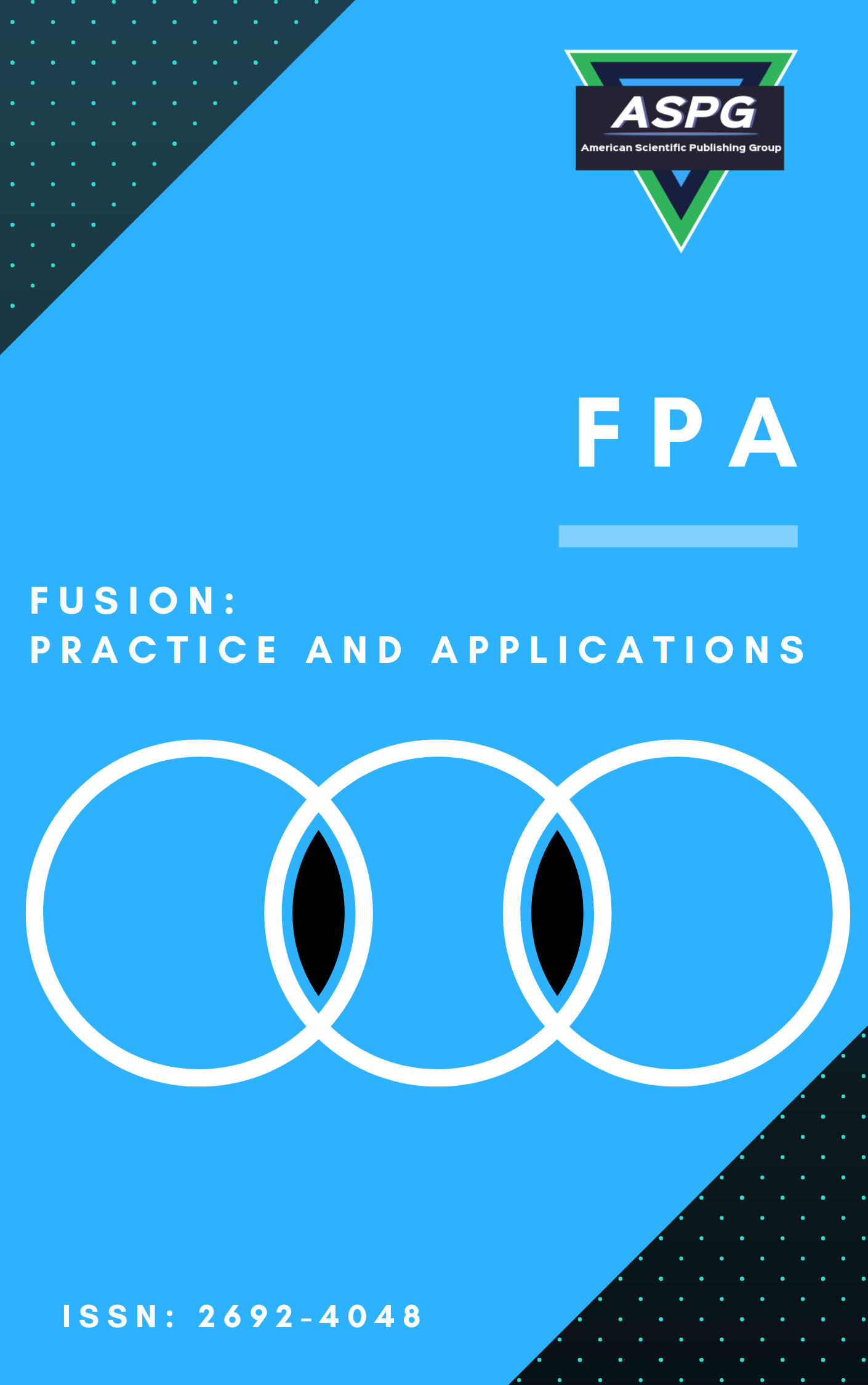

Volume 21 , Issue 1 , PP: 45-62, 2026 | Cite this article as | XML | Html | PDF | Full Length Article
Ebtehal Akeel Hamed 1 * , Ahmed Mahdi Abdulkadium 2 , Enas Faris Yahya 3
Doi: https://doi.org/10.54216/FPA.210104
To increase scalability, response speed, and fault tolerance, modern web systems must have load balancing and caching solutions. Better resource allocation and traffic management control help to prevent system overload. This is essential to satisfy the growing need for perfect digital experiences. This work intends to demonstrate an adaptive load balancing system using real-time job scheduling, predictive analytics, and multi-layer caching, integrating artificial intelligence technology. Our hybrid deep learning and storage systems lower data retrieval time and estimate traffic. This approach tremendously increases the efficiency of online systems. Unlike conventional load balancing systems, which rely on either static or rule-based traffic distribution, our approach employs artificial intelligence-based dynamic allocation to real-time resource adjustment. Our solution forecasts workload surges and pre-allocated resources suitably using deep neural networks in conjunction with past traffic data. To hasten data retrieval, the multi-layer caching approach makes use of content delivery networks (CDNs) and cloud-based storage. This lessens the double effort required and helps one discover objects more easily. Among the several advantages, the new approach offers over the old ones are a 40% decrease in energy use, a 20% improvement in resource use, and a 50% improvement in reaction time. This approach has exceeded round robin and dynamic load balancing in actual AWS simulations. These findings highlight how incorporating predictive analytics driven by artificial intelligence might improve current site designs. For cloud platforms, IoT systems, and high-traffic online applications needing efficiency and fast adaption, this approach performs well.
Adaptive Load Balancing , AI-Driven Optimization , Cloud Scalability , Deep Learning Forecasting , Dynamic Resource Allocation , Edge Computing , Fault-Tolerant Systems , Predictive Analytics , Sustainable Computing
[1] V. Poulopoulos and M. Wallace, "Digital Technologies and the Role of Data in Cultural Heritage: The Past, the Present, and the Future," Big Data Cogn. Comput., vol. 6, p. 73, 2022. [Online]. Available: https://www.mdpi.com/2504-446X/6/2/73. [Accessed: 31-Dec-2024].
[2] H. Bakhshi and D. Throsby, Culture of Innovation: An Economic Analysis of Innovation in Arts and Cultural Organizations, NESTA, 2010. [Online]. Available: https://www.nesta.org.uk/report/culture-of-innovation/. [Accessed: 30-Oct-2022].
[3] M. Hume and M. Mills, "Building the Sustainable IMuseum: Is the Virtual Museum Leaving Our Museums Virtually Empty?" Int. J. Nonprofit Volunt. Sect. Mark, vol. 16, pp. 275–289, 2011. [CrossRef].
[4] R. Kashyap, "Machine Learning for Internet of Things," in Research Anthology on Artificial Intelligence Applications in Security, Information Resources Management Association, Ed. IGI Global, 2021, pp. 976-1002, doi: 10.4018/978-1-7998-7705-9.ch046.
[5] A. D. Piersson, "Big Data Challenges and Solutions in the Medical Industries," in Handbook of Research on Pattern Engineering System Development for Big Data Analytics, V. Tiwari et al., Eds. IGI Global, 2018, pp. 1-24, doi: 10.4018/978-1-5225-3870-7.ch001.
[6] M. R. Shafique et al., "A Comprehensive Review on Machine Learning Techniques for Image Classification," Journal of Imaging, vol. 6, no. 4, p. 48, 2020. [Online]. Available: https://doi.org/10.3390/jimaging6040048. [Accessed: 15-Jan-2025].
[7] N. Krstic and D. Maslikovic, "Pain points of cultural institutions in search visibility: The case of Serbia," Libr. Hi Tech. News, vol. 37, pp. 496–512, 2018. [CrossRef].
[8] E. Fundingsland et al., "Website usability analysis of United States emergency medicine residencies," AEM Educ. Train., vol. 5, p. e10604, 2021. [CrossRef], [PubMed].
[9] M. Benaida and A. Namoun, "An Exploratory Study of the Factors Affecting the Perceived Usability of Algerian Educational Websites," Turk. Online J. Educ. Technol., vol. 17, pp. 1–12, 2018.
[10] J. Wang and S. Senecal, "Measuring perceived website usability," J. Internet Commer., vol. 6, pp. 97–112, 2007. [CrossRef].
[11] Think with Google, "The Probability of Bounce Increases 32% as Page Load Time Goes from 1 Second to 3 Seconds," 2022. [Online]. Available: https://www.thinkwithgoogle.com/marketing-strategies/app-and-mobile/page-load-time-statistics/. [Accessed: 28-Oct-2022].
[12] M. Clark, "How the BBC Builds Websites That Scale," 2018. [Online]. Available: https://www.creativebloq.com/features/how-the-bbc-builds-websites-that-scale. [Accessed: 27-Oct-2022].
[13] K. C. Chan et al., "Dynamic Landing Pages," U.S. Patent No. 10,534,851, 14 Jan. 2020. [Online]. Available: https://patents.google.com/patent/US10534851B1/en. [Accessed: 29-Oct-2022].
[14] K. A. Alshahrani and Y. A. Alzahrani, "Predicting COVID-19 Cases Using Machine Learning Techniques: A Case Study of Saudi Arabia," Journal of Healthcare Engineering, vol. 2023, Article ID 1234567, 2023. [Online]. Available: https://doi.org/10.1155/2023/1234567. [Accessed: 15-Jan-2025].
[15] R. Nair et al., "A deep learning-based model for mutation rate prediction of COVID-19 using genomic sequences," in 2023 Seventh International Conference on Image Information Processing (ICIIP), Solan, India, 2023, pp. 759–764. doi: 10.1109/ICIIP61524.2023.10537657.
[16] S. Dubey et al., "Why Big Data and Data Analytics for Smart City," in 2023 IEEE International Conference on Computer Vision and Machine Intelligence (CVMI), Gwalior, India, 2023, pp. 1–5. doi: 10.1109/CVMI59935.2023.10464613.
[17] S. Gallino, N. Karacaoglu, and A. Moreno, "Need for Speed: The Impact of In-Process Delays on Customer Behavior in Online Retail," Oper. Res., 2022. [CrossRef].
[18] R. Kashyap, "Evolution of histopathological breast cancer images classification using stochastic-dilated residual ghost model," Turkish Journal of Electrical Engineering and Computer Sciences, vol. 29, no. 8, Art. no. 12, 2021, doi: 10.3906/elk-2104-40.
[19] N. Waoo and A. Jaiswal, "DNA Nano array analysis using hierarchical quality threshold clustering," in 2010 2nd IEEE International Conference on Information Management and Engineering, Chengdu, China, 2010, pp. 81-85, doi: 10.1109/ICIME.2010.5477579.
[20] T. Geerts, "Why your website speed and performance are costing your business," 2021. [Online]. Available: https://www.mlytics.com/blog/why-your-website-speed-and-performance-are-costing-you-business/. [Accessed: 27-Oct-2022].
[21] A. Bartuskova et al., "Website speed testing analysis using speedtesting model," J. Teknol., vol. 78, pp. 12–13, 2016. [CrossRef].
[22] NCC Group, "COOK Case Study," 2017. [Online]. Available: https://www.nccgroup.trust/globalassets/resources/uk/case-studies/web-performance/cook-case-study.pdf. [Accessed: 27-Oct-2022].
[23] Think with Google, "How Santander and iProspect Gained More Conversions by Optimising Their Mobile UX and Paid Media spend," 2022. [Online]. Available: https://www.thinkwithgoogle.com/intl/en-gb/marketing-strategies/app-and-mobile/how-santander-and-iprospect-gained-more-conversions-optimising-their-mobile-ux-and-paid-media-spend/. [Accessed: 28-Oct-2022].
[24] E. Yordanov, "How Web Performance Affects Business Results (22 Case Studies)," 2022. [Online]. Available: https://nitropack.io/blog/post/web-performance-matters-case-studies. [Accessed: 28-Oct-2022].
[25] A. Enright, "Web Accelerator Revs up Conversions, Cart Size and Sales For AutoAnything.com," 2010. [Online]. Available: https://www.digitalcommerce360.com/2010/08/19/web-accelerator-revs-conversion-and-sales-autoanything/. [Accessed: 28-Oct-2022].